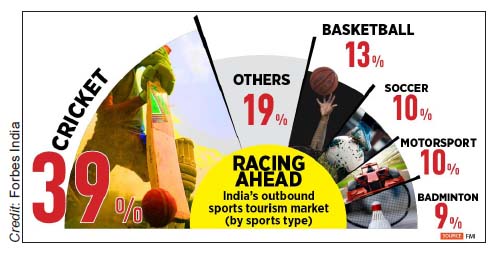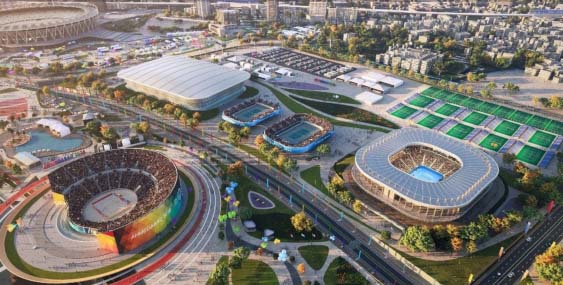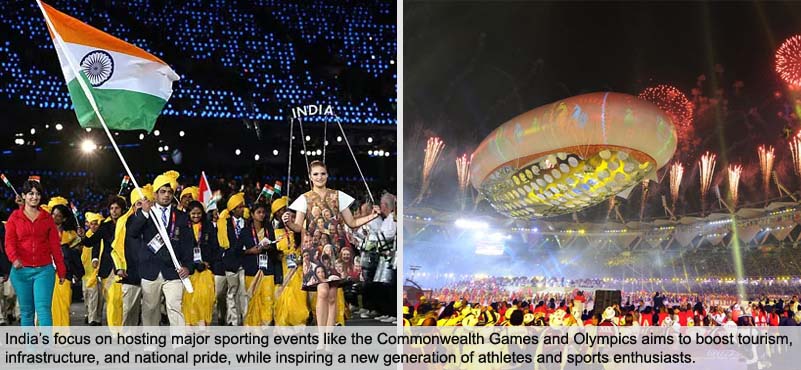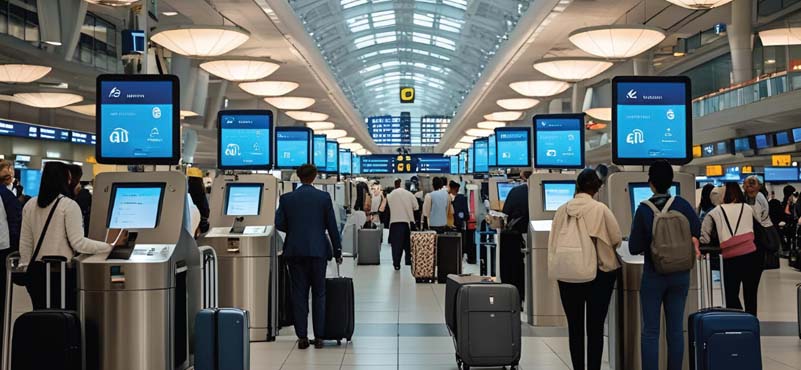Share the post "India Ups the Game, with more Sports Tourism Opportunities at Home: Bids for Commonwealth Games 2030"
Today, sports tourism is worth more than £500 billion and accounts for 10% of the total tourism market, according to Madrid-based United Nations agency UN Tourism. And that’s set to accelerate over the coming decade, with some projections suggesting a quadrupling of the sector by 2033 to £2.25 trillion. We have yet to play the catch-up game, even as IPL has catapulted India into the bigger league globally, in cricket as a sport. If you see the IPL narrative, there are only winners, no losers. It’s a narrative where the primary funding comes from sponsors, and they are the happiest with both quality and quantity in numbers who get their advertising message.

Editor, Destination India Tourism Exchange
India is bidding for the 2030 Commonwealth Games, pitching them at Ahmedabad, as the host city, whereby giving a fresh momentum to its efforts to expand the city’s world class sports and urban infrastructure. Athletes from 72 countries are expected to participate in the CWG, besides contingent members, technical delegates, officials, tourists, etc.. It will benefit local businesses and generate revenue, the government said.
The Sardar Vallabhbhai Patel Sports Enclave will be the central venue, anchored by the Narendra Modi Stadium in Motera, the world’s largest cricket ground with a capacity of over one lakh.
The city is gearing up for global events in the near future:
Commonwealth Weightlifting Championship 2025 opened on August 24 at the newly completed Veer Savarkar Sports Complex in Naranpura.
The Asian Aquatics Championship is scheduled for September-October at facilities within the Sardar Vallabhbhai Patel enclave, a 300-acre complex. The venue is under development, with 10 new stadiums with permanent and temporary structures to host activities like gymnastics, skateboarding, softball and tennis.
In 2026, the city will host the Asian Weightlifting Championship and the Archery Asia Para Cup.
In 2029, Ahmedabad will stage the World Police and Fire Games across Ahmedabad, Gandhinagar and Ekta Nagar.
 From November 22 to 30, 2026, Ahmedabad will host all Group D matches of the AFC U-17 Asian Cup qualifiers.
From November 22 to 30, 2026, Ahmedabad will host all Group D matches of the AFC U-17 Asian Cup qualifiers.
Infrastructure in both Ahmedabad and Gandhinagar:
A multimodal transport hub is being built in Ahmedabad and state capital Gandhinagar, which includes Western Railway tracks and city bus services.
Mega sports infrastructure has been planned in an area of one lakh square meters on SG Highway, which will connect areas like Ambli, Ghuma, Jodhpur, Shella and Vejalpur.
Develop five small cities around Ahmedabad (Kalol, Sanand, Dahegam, Bareja, Mehmedabad) as satellite towns.
At the Gujarat Police Academy in Karai where a 143-acre site is being transformed into a sports hub. It will house an athletics stadium and facility for hosting Rugby 7s and football.
The Sabarmati riverfront currently under construction in Phase-II, could host water sports including a stretch of 2 km on the riverfront.
The Mumbai–Ahmedabad bullet train corridor is expected to complete its Gujarat section by December 2027 and the full stretch by December 2029.

The Sardar Vallabhbhai Patel International Airport is undergoing a ₹3,130 crore expansion with a new terminal.
Metro and BRTS extensions are on track, including a seven-kilometre sports-themed corridor from the Sabarmati Multimodal Hub to Koteshwar Metro Station. Road-widening projects around Naranpura and Motera are being advanced to improve access to stadiums.
Accommodation facilities are also being scaled up. Land has been earmarked for Athletes’ Village with integrated housing, dining, healthcare and training amenities. Several hotels are being planned and upgraded near major sporting venues to meet international standards.
India last hosted the CWG in 2010. The General Assembly of Commonwealth Sport will decide the host country in the last week of November in Glasgow. India’s chances of bagging the event have brightened as Canada has pulled out of the race citing budgetary constraints.
The union cabinet, in a press release, has said that hosting the event in India would:
Leave a lasting impact on tourism, creating jobs and inspiring millions of young athletes.
A large number of professionals will be getting opportunities in Sports science, Event Operations and Management, Logistics and transport coordinators, Broadcast and media, IT and communications, public relations and communications.
Hosting such a globally prestigious event will foster a strong sense of national pride and unity. It will provide a shared national experience and boost the morale of our Nation. It will inspire a new generation of athletes to enter into Sports as a career option and encourage greater participation in sports at all levels.
It will inspire a new generation of athletes to enter into sports as a career option and encourage greater participation in sports at all levels.
India is also said to be keen to host the Olympics, the first opportunity that is still open, as at present. Which will give another fillip to sports and to tourism. You may ask, are we ready to host them, in terms of our own winnability? Not on date, but over the next ten years or so, between now and then, much can change. And it should. In the run-up, we can expect a big adrenaline rush towards sports, in games where the medals are won. Recall, playing hockey and winning gives us just one gold. But in athletics, swimming, archery, boxing, there are multiples of medals waiting to be won. The impending games, should we win the mandate, will inspire the youth to get onto the job, creating a new fever for sports, not just cricket.
Globally, tourism opportunities are built around sporting events. Around the dates, before and after, there are companion events and tours that are offered. Within the city, there is much happening that become memories for a lifetime. The host city/nation become the focus of attention over months – aspects like television coverage, which also broadcast live images of the sights and sounds of the city, give a big boost to attracting millions of tourists in the years to come.
One big word of caution, though. Care must be taken not to over-spend. Because many of the facilities built do not get used adequately, once the games are over. Therefore, we need to approach building infrastructure that is cheaper, retractable, even re-located, if necessary. Not in concrete, but in green energy, using natural resources of which India can set another global example.





